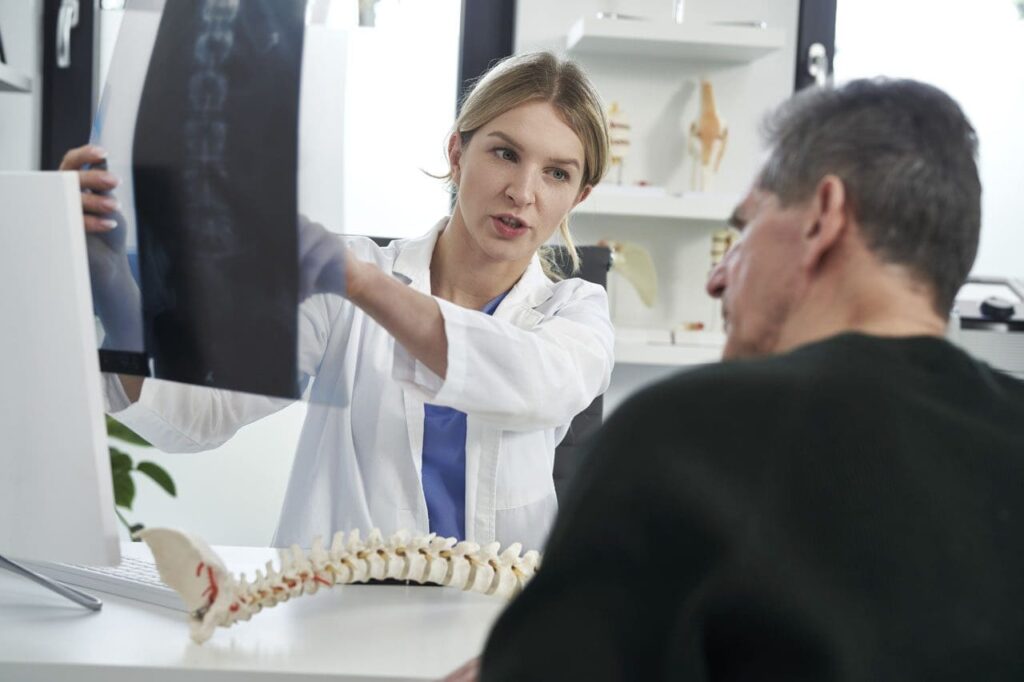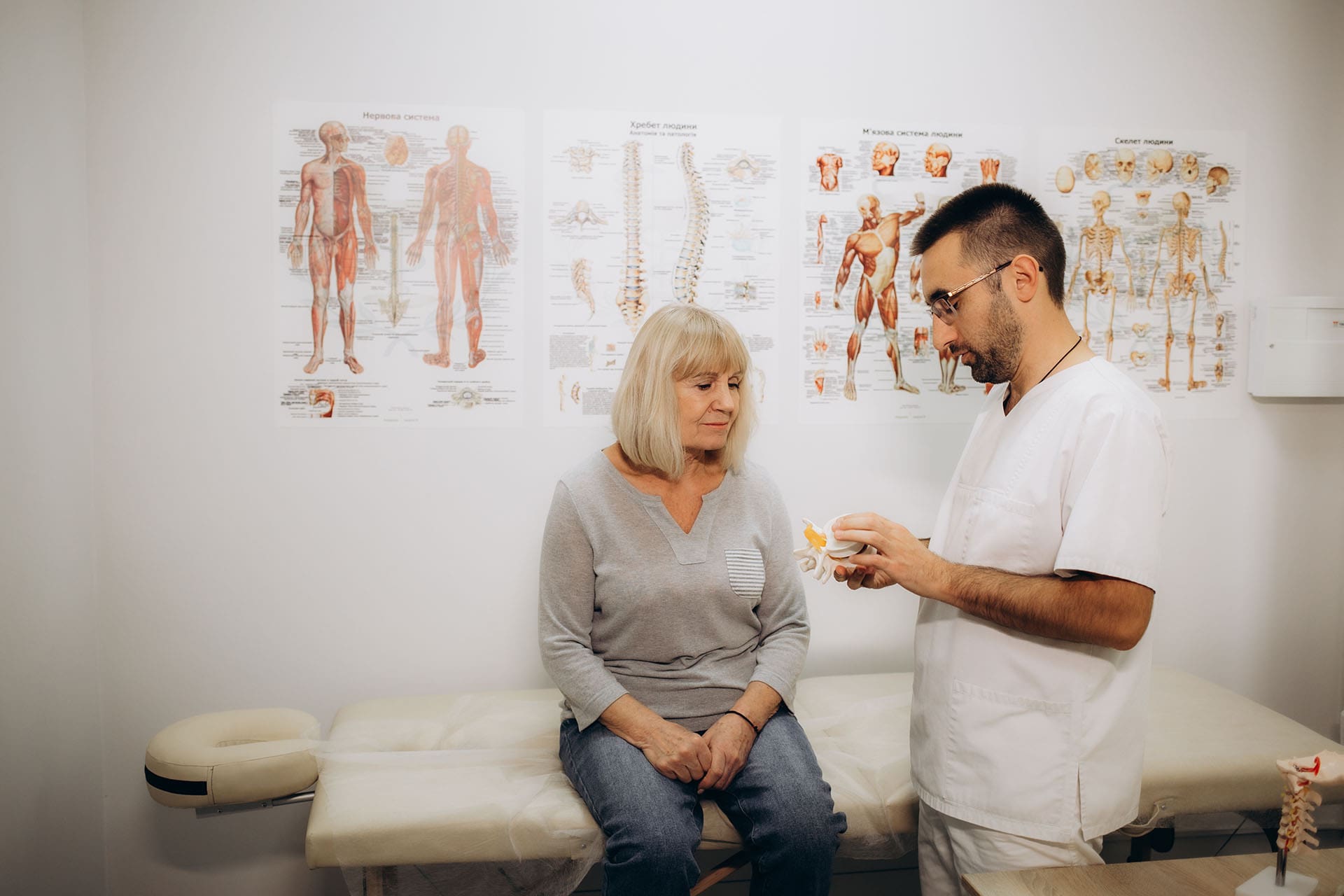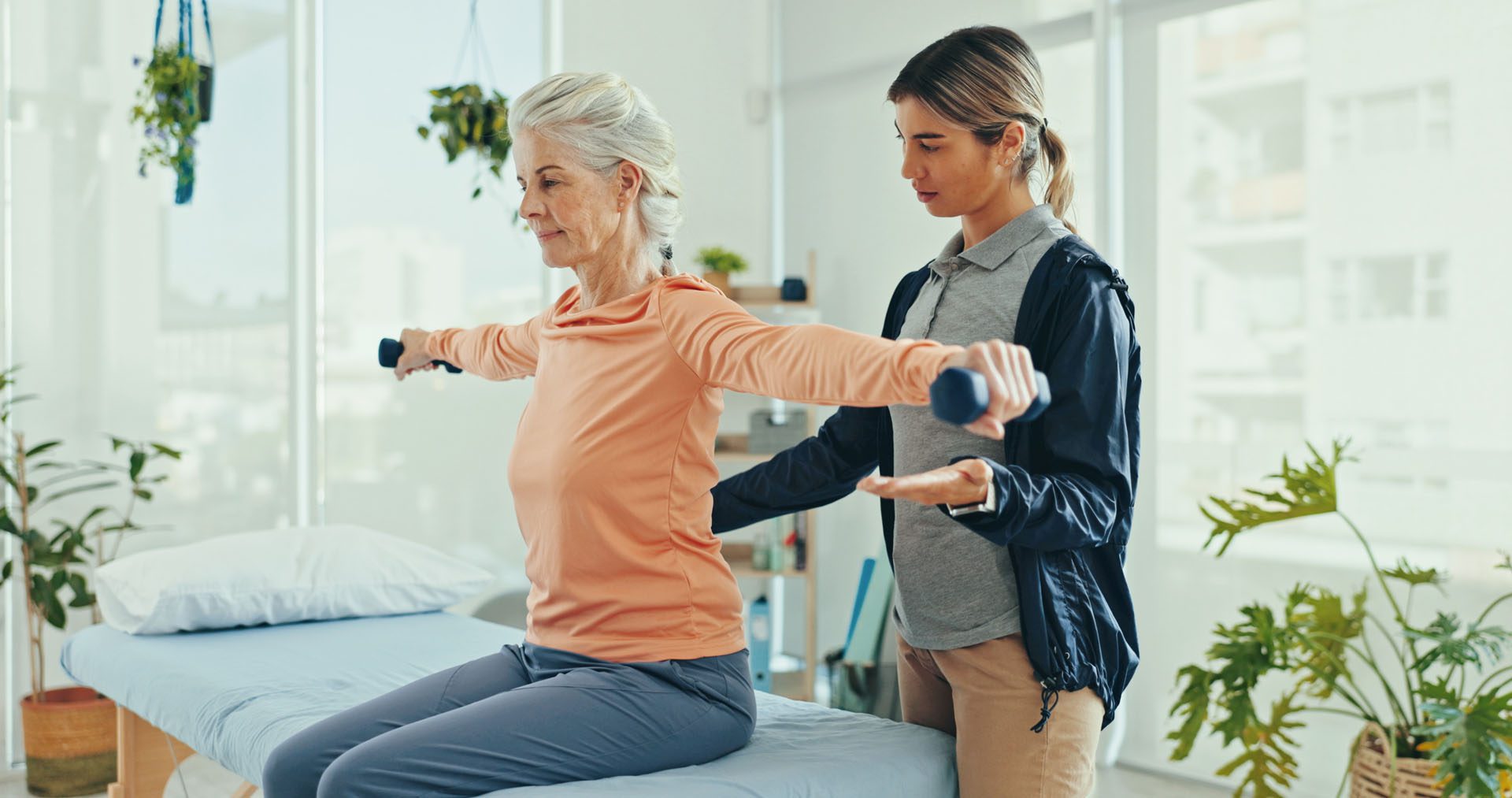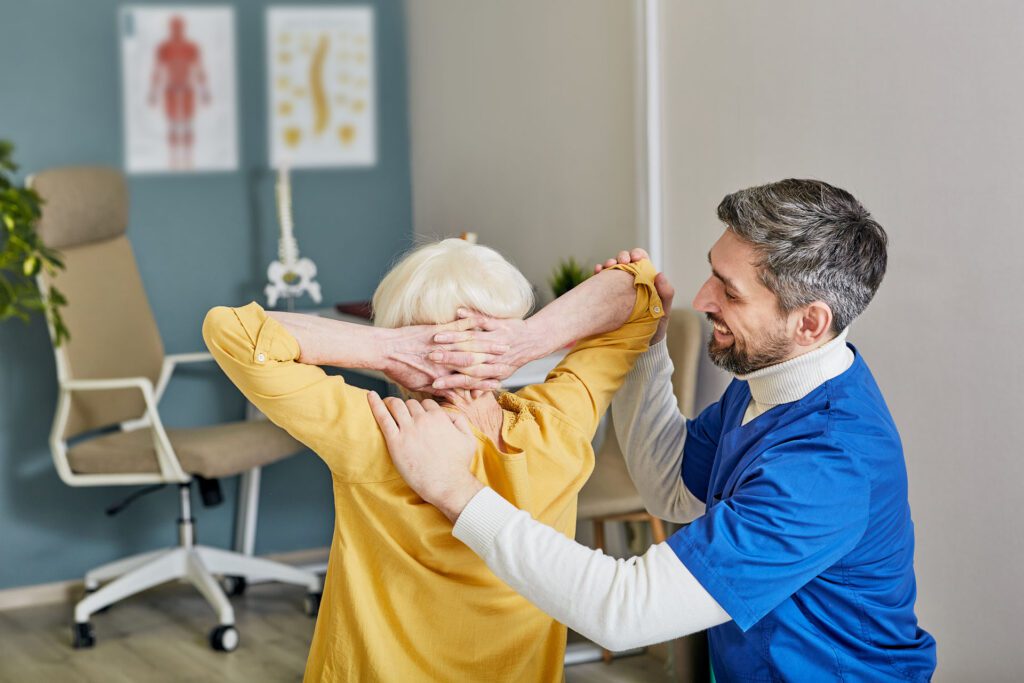Neuropathy Chiropractic Treatment Questions and Answers
A ChiroMed-Style Guide for Safer, Active Recovery

What is peripheral neuropathy?
Peripheral neuropathy refers to the irritation or damage of nerves outside the brain and spinal cord. Common signs include tingling, burning pain, numbness, sensitivity to cold or heat, weakness, cramping, and balance issues. Causes vary: diabetes and prediabetes, spine or joint compression (pinched nerves), vitamin deficiencies, medication effects (including some chemo drugs), autoimmune conditions, infections, alcohol overuse, and trauma from work, sports, or car crashes.
Why this matters: Two people can both have “neuropathy,” but they need very different treatment plans. The first step is a careful assessment to identify likely drivers and eliminate potential red flags.
Can chiropractic care cure neuropathy?
No. Most cases of neuropathy are not “curable.”
However, when combined with active rehabilitation and smart medical co-management, chiropractic care can often reduce symptoms, improve mobility, enhance balance, and support daily functioning. The goal is to alleviate mechanical irritation, enhance joint mobility, and promote safer patterns—while medical teams address glucose control, medication issues, wound care, and other systemic factors.
How a ChiroMed-style program helps
A modern chiropractic program doesn’t rely on one tool. It blends gentle hands-on care with progressive exercise and lifestyle support:
- Low-force spinal and extremity adjustments to restore motion and reduce local nerve stress.
- Soft-tissue therapy (myofascial techniques, instrument-assisted work) to ease guarding and improve circulation.
- Nerve mobility drills (nerve glides) to reduce sensitivity where appropriate.
- Traction/decompression for select patients with disc or foraminal narrowing.
- Balance, gait, and strength training to lower fall risk and protect joints.
- Lifestyle coaching on sleep, stress, ergonomics, and foot care; nutrition support coordinated with your medical team.
- Acupuncture or electro-acupuncture in clinics that offer it, to modulate pain and sensitivity.
Safety first (and always)
Chiropractic care is generally low-risk when delivered after a thorough interview and physical examination. Your clinician should screen for red flags, adapt techniques to account for bone density and age, adjust for diabetes or chemotherapy history, and co-manage with your primary-care clinician, neurologist, endocrinologist, podiatrist, or pain specialist when necessary.
Call your medical team or urgent care first if you develop:
- sudden severe weakness or paralysis
- bowel or bladder changes, groin numbness
- rapidly worsening numbness with foot wounds or infection
- unexplained fever, night pain, or weight loss
- cancer history with new bone pain
How chiropractic integrates with traditional medicine
Think team sport.
- Diabetic neuropathy: medical teams focus on glucose control, wound/foot care, and medication choices; chiropractic care adds mobility, balance exercises, and joint care to protect walking and daily activities.
- Spine-related neuropathy (radiculopathy): chiropractors address motion, posture, and stability, while physicians guide imaging, medications if needed, and surgical opinions for non-responders or those with red flags.
- Post-injury neuropathy (work/sport/MVA): Coordinated plans address soft-tissue strain, scar, and joint mechanics; objective testing and documentation support a safe return to work or sport.
What results should I expect?
Results depend on cause, severity, and time. Some people feel better in weeks; others progress slowly over months. Programs that combine hands-on care, progressive exercise, balance training, and lifestyle steps tend to produce the best long-term function and comfort. Expect regular re-checks with objective measures (sensation, strength, balance, gait, daily tasks).
A sample 12-week roadmap (personalized to your exam)
Weeks 1–4 | Calm & Protect
- Low-force adjustments and gentle soft-tissue work
- Basic nerve-glide and mobility drills, tolerance-based
- Foot-care education and home safety for fall prevention
- Short walking intervals; sleep and stress routines
Weeks 5–8 | Rebuild
- Posture, hip/core strength, ankle/foot stability
- Balance and gait training; ergonomic coaching
- Consider traction/decompression or acupuncture where indicated
- Nutrition tweaks (with your medical team) for inflammation and glucose control
Weeks 9–12 | Function & Maintain
- Job/sport-specific progressions and endurance
- Outcome re-testing (pain, sensation, gait, strength, functional tasks)
- Long-term plan: home program + periodic tune-ups
FAQ: Chiropractic Neuropathy Treatment Questions
1) Will I still need medications?
Maybe. Chiropractic is complementary. As movement and sleep improve, some people need fewer pain meds—decisions are made with your prescribing clinician.
2) Are adjustments painful?
Most patients tolerate them well. We can start with very gentle, low-force methods and progress as you gain confidence.
3) How often are visits?
Usually more frequent early on, then fewer as you learn self-care. Re-testing guides when to taper.
4) What about imaging or nerve tests?
If your exam suggests it—or if progress stalls—your team may order X-rays/MRIs, EMGs/NCVs, labs, or vascular studies.
5) What can I start at home?
Daily foot checks, short walks, simple balance drills by a counter, gentle mobility, and a regular sleep routine. For diabetic cases: medical-guided glucose control and protective footwear.
6) Is this safe if I’m older or osteoporotic?
Yes, with proper screening and adapted techniques (instrument-assisted, mobilization, or position-based methods).
7) Does this help after a car crash or work injury?
Yes. Plans target alignment, soft tissue, and movement patterns; clinicians also document objective findings to support authorizations and return-to-work decisions.
What to look for in a clinic
- Clear explanation of findings and plan, in plain language
- Customized techniques (not one-size-fits-all)
- Built-in active rehab (balance, gait, strength)
- Coordination with your medical team
- Regular outcome measurements and progress notes
- Education on home care and prevention
The take-home message
- Not a cure—but helpful. Modern chiropractic care, combined with active rehabilitation, can help reduce neuropathic pain, improve mobility, and support a safer daily life.
- Safety and teamwork matter. Screening, personalization, and medical co-management make care smarter and safer.
- Movement is medicine. Gentle hands-on care plus progressive exercise and healthy habits protect gains and prevent setbacks.
References
Medical Associates of Northwest Arkansas. (n.d.). Chiropractic care for peripheral neuropathy.
DE Integrative Healthcare. (n.d.). Answers to your top 10 questions about chiropractic care.
Antigo Chiropractic. (n.d.). Neuropathy FAQs.
Aventura Wellness & Rehab Center. (n.d.). Nerve renewal: How chiropractic care can help alleviate neuropathic pain.
Waukee Wellness & Chiropractic. (n.d.). Can a chiropractor help with neuropathy?.
Renovation Chiropractic. (n.d.). Common questions about neuropathy.
Vero Health Center. (n.d.). FAQ about neuropathy.
Optimum Wellness Solutions. (n.d.). Neuropathy FAQs.
Cornerstone Chiropractic & Wellness. (n.d.). Neuropathy services.
Ocean Chiropractic & Health. (n.d.). What are the most common questions about chiropractic care?.
Legacy Family Health. (n.d.). Neuropathy overview.
Urteaga Chiropractic. (n.d.). How to use chiropractic care for neuropathy relief: A beginner’s guide.
Pain & Wellness Institute. (n.d.). Can chiropractic care help my neuropathy?.
Knecht Chiropractic Clinic. (n.d.). Can chiropractic care help patients with peripheral neuropathy?.
KB Chiropractic—Hudson. (n.d.). Can chiropractic care help relieve neuropathy symptoms?.
Dr. Leap Chiropractic. (n.d.). 10 answers to frequently asked questions about chiropractic care.
The Well Chiropractic. (n.d.). Neuropathy: What is it and how chiropractic treatment can help.
DeBruin Chiropractic. (n.d.). Can chiropractic care help with neurological conditions?.
Family Chiropractic Plus. (n.d.). Feeling the impact of neuropathy: A caring holistic path to relief.
Lowery Chiropractic. (n.d.). How chiropractic care offers relief from peripheral neuropathy



